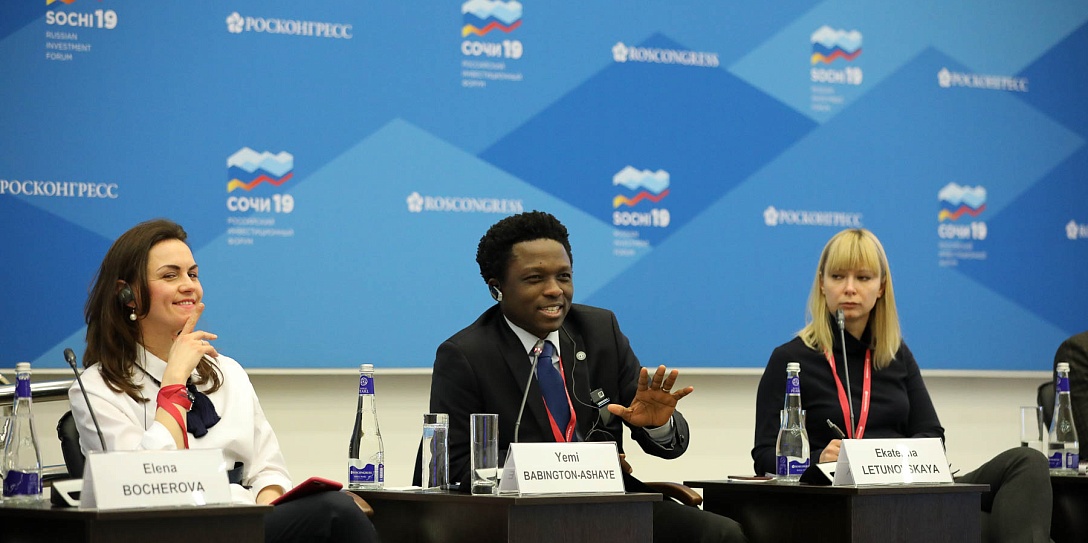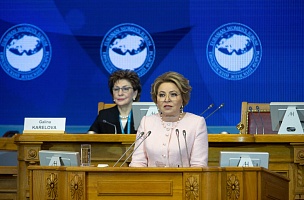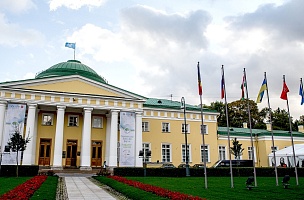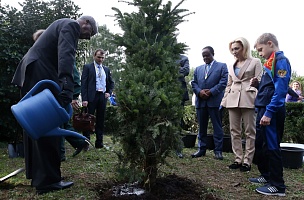KEY CONCLUSIONS
People, the environment, and profit form the key elements of sustainable development
«We need a clear understanding of what is meant by sustainable development, and contemplate its key cornerstones: society first of all, the social sector secondly, and the environment thirdly. These are the three elements — people, the planet, and profit. Sustainable development can be achieved when the rules in these three areas are followed. This also concerns new technology, digital technology. We need to understand at a societal level how people interact, and anticipate how they will interact in the future in order to secure sustainable development on this platform,» Halit Ünver, Research Fellow, Institute for Applied Knowledge Processing.
The space for communication between a city’s residents and local government bodies needs to be broadened
«While we do need to talk about smart cities as a kind of trend, we must also understand that each one of us has an entirely different conception of what they mean. If we take Seoul, where best practices are being drawn fr om <...>, or Shenzhen in China, which is also held up as an exemplar of this kind, we see that residents not only have an interest in how public funds are spent, they directly influence it. What’s more, 40% of a local population’s influence is always factored in when a decision is made by the city administration. Are we as a country ready today for every citizen to become so subjective as to be able to engage in and influence what is happening? As things stand, this seems to me to be a moot point. However, we must move in this direction, and expand opportunities for a city’s residents to communicate with local government bodies,» Elena Bocherova, Executive Director, Acronis-Infoprotect.
A modern city is a space defined by choice
«Today, what defines a city is its space for choice, its space to realize your ideas, and also its space for individual consumer choice. And today, understanding of this choice has become incredibly complicated. We can now use big data to study the status-quo of demand for choice, but if we only make decisions on this basis, it may be at the expense of dynamism and flexibility when it comes to making a final decision. A city is ceasing to be a place wh ere people move en-masse from residential districts to their places of work or a shopping centre. Demand for intermodality is playing an increasingly bigger role. As well as demand for choice, a city today is defined by its population density in one place or another at various times of day. This is frequently a determining factor for the creation of new urban — including commercial — spaces,» Ekaterina Letunovskaya, Vice President, Habidatum.
Efficient teams of people are needed to implement best sustainable development practices in cities
«In order to secure sustainable development for an urban environment, it is not only important to collect best international practices and bring together strong leaders who have an interest in them. Rolling out these practices requires teams made up of people representing a vast range of sectors, including local government representatives,» Roman Chukov Chairman of the Board, Russian Center for Promotion of International Initiatives; Assistant to Youth Policy Director, Roscongress Foundation.
Collaboration with local authorities is required to implement urban development projects
No urgent problem can be solved without collaboration and aid from various local government bodies, be it waste processing, solar energy projects for housing, or parking issues," Rishabh Sethi International Director, BRICS International Forum.
PROBLEMS
Lack of jobs for young people
«The availability or lack of jobs for young people has a huge bearing on the sustainable development of cities the world over. Youth unemployment is one of the biggest issues affecting society everywhere. Suffice to say, 13% of young people across the globe are without work. The figure is much lower in Russia, but nevertheless, half of all unemployed people in your country are young people,» — Yemi Babington-Ashaye, President, United People Global; Member of the Youth Skills and Innovation Commission, Global Business Coalition for Education.
An environment unconducive to implementing projects to change the urban environment
«There are some striking ideas coming from cities. As a rule, they come from young people, who put forward genuinely breakthrough initiatives which are in step with the times and global trends. However, there are two problems. Firstly, nobody listens to them. Secondly, these people don’t know how to get an idea off the ground,» Tatiana Zhuravleva, Head of 100 Cities Project, Urban Competence Centre, Agency for Strategic Initiatives to Promote New Projects.
SOLUTIONS
Search for leaders who can unite societies around the concept of changing the urban environment
«With the help of a programme developed by the Agency for Strategic Initiatives, we have taken the decision to look for city leaders whom we will help to make that vital first step: getting their idea off the ground, so they get heard in places, in cities. This will help bring societies in cities around the idea of changing the urban environment,» Tatiana Zhuravleva, Head of 100 Cities Project, Urban Competence Centre, Agency for Strategic Initiatives to Promote New Projects.
Coordination at a local and global level
«In order to improve the situation, we need to coordinate efforts being undertaken at the global level — as part of the global society — and the local level. On the one hand, global recommendations need to be considered at the level of individual cities, while on the other hand, we need a precise understanding of what is being done at a local level to solve this issue. These actions must also be synchronized,» Yemi Babington-Ashaye, President, United People Global; Member of the Youth Skills and Innovation Commission, Global Business Coalition for Education.
Partnership with large companies
«An urban environment can be revived by working in partnership with large companies, especially if these companies specialize in urban development. Not so long ago Rosatom became our partner for such a project. Together, we will work to improve the urban environment in small towns and cities, including closed ones,» Tatiana Zhuravleva, Head of 100 Cities Project, Urban Competence Centre, Agency for Strategic Initiatives to Promote New Projects.






